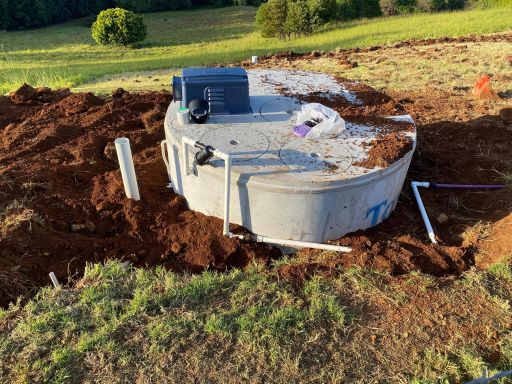Septic Systems: A Comprehensive Guide to On-Site Sewage Management in Byron Bay
In areas where homes are not connected to the council’s sewerage system, residents often rely on on-site sewage management systems, commonly known as septic systems. These systems play a crucial role in separating solids, grease, and oils from wastewater before it enters the surrounding soil. Proper maintenance of septic systems is essential to ensure the health and well-being of residents and to protect the local environment.
How a Septic Tank Works
The primary function of a septic tank is to separate heavier solids from the wastewater that flows into it. When wastewater enters the septic tank, solid particles settle at the bottom, undergoing bacterial digestion. This digestion process reduces the amount of solids and transforms them into sludge, which accumulates at the bottom of the tank.
Meanwhile, materials such as grease and oil float to the surface, creating a layer of scum. The remaining liquid, known as effluent, exits the tank and flows into drainage beds or trenches in the surrounding soil. This effluent undergoes further natural treatment processes in the soil.
Components of a Septic System
A septic system consists of several key components that work together to effectively manage on-site sewage. These components ensure the proper separation and treatment of solids, grease, and oils before the effluent is released into the soil. Some of the common components of a septic system include:
- Septic Tank: The septic tank is the primary component responsible for separating solids, grease, and oils from wastewater. It collects and holds the wastewater for bacterial digestion and subsequent separation.
- Drainage Beds/Trenches: The effluent from the septic tank flows into drainage beds or trenches in the surrounding soil, where it undergoes further treatment through natural processes.
- Absorption Trenches: In some cases, septic systems may include absorption trenches, which provide additional treatment and disposal of the effluent. These trenches allow for the absorption of wastewater into the soil, where it is further purified.
- Composting Toilets: Composting toilets are an alternative type of on-site sewage management system. They utilize natural processes to break down and decompose human waste, transforming it into compost that can be safely used as fertilizer.
Approval and Regulation
In Byron Bay, approval from the local council is required to install or alter an on-site sewage management system. This ensures that the system meets the necessary standards and regulations for effective operation. To obtain approval, the following steps should be followed:
- Submit an Application: Complete and submit an application form to the council, providing all the required information.
- Pay the Fee: Pay the necessary fee associated with the approval process.
- Approval to Operate: Once the system is installed, an ‘Approval to Operate’ is required from the council. This approval ensures that the system is functioning correctly and meets all the necessary requirements.
It is important to note that existing septic systems also require an ‘Approval to Operate’. If you are a new property owner with an on-site sewage management system, it is crucial to apply for approval within the designated period.
Maintenance and Care
Proper maintenance and care of septic systems are essential to ensure their long-term effectiveness and to prevent any adverse effects on health or the environment. Here are some key guidelines for maintaining a septic system:
- Regular Desludging: Septic tanks should be desludged (pumped out) at regular intervals, typically every five years. This process removes accumulated sludge and scum from the tank, allowing it to function optimally.
- Water Conservation: Conserving water helps reduce the strain on the septic system. Implement water-saving measures such as repairing leaks, using efficient fixtures, and practicing mindful water usage.
- Proper Disposal: Avoid flushing or draining harmful substances into the septic system. These include chemicals, oils, grease, medications, and non-biodegradable materials. Dispose of these properly through designated channels.
- Inspections and Maintenance: Regularly inspect the septic system for any signs of damage or malfunction. Engage professional services for inspections and maintenance as needed.
Resources and Further Information
To ensure a clear understanding of on-site sewage management systems and septic systems, additional resources and information are available. These include guidelines, factsheets, and design examples. Some useful resources include:
- On-site Sewage Management Strategy and Guidelines: Provides comprehensive guidelines and strategies for managing on-site sewage systems.
- Design Examples: Offers design examples and standards for various septic system configurations.
- Factsheets: Provides detailed information on various aspects of on-site sewage management, including system maintenance, roles and responsibilities, and water conservation.
Conclusion
Understanding and effectively managing septic systems is crucial for residents in Byron Bay who rely on on-site sewage management. By following proper maintenance practices, obtaining necessary approvals, and adhering to guidelines, septic systems can continue to function efficiently and contribute to a healthier environment. Stay informed, seek professional advice when needed, and prioritize the care of your septic system for a sustainable future.
Note: This article is a comprehensive guide to understanding and managing septic systems for on-site sewage management in Byron Bay. It aims to provide valuable information on the functioning, maintenance, and regulations surrounding septic systems. Please consult local authorities and professionals for specific guidelines and requirements in your area.




